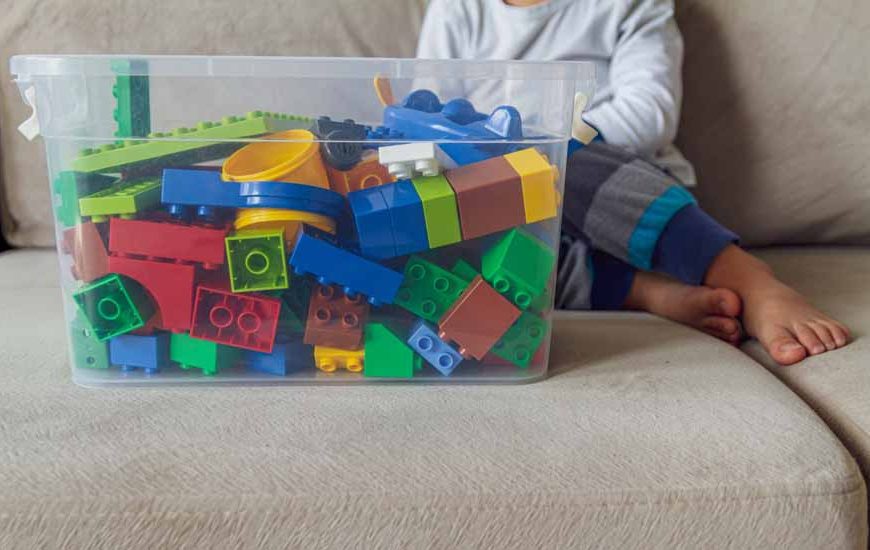Sensory bins offer a dynamic gateway to childhood development, providing a multisensory experience that engages children’s senses while fostering cognitive and fine motor skills. Among the diverse array of sensory activities, the Animal Sensory Bin stands out as an exciting and educational variation. This article serves as a guide to creating an immersive and stimulating environment, inviting children to explore the wonders of the animal kingdom through tactile sensations, visual stimuli, and imaginative play. From understanding the benefits of sensory engagement to crafting engaging activities, this journey promises not only joyous play but also an invaluable foundation for learning and development.
Understanding the Benefits of Sensory Play:
Before delving into the specifics of creating an Animal Sensory Bin, it’s essential to understand the benefits of sensory play for children. Sensory play helps develop various skills, including:
- Fine Motor Skills:
- Cognitive Skills:
- Language Development:
- Emotional Regulation:
Manipulating and exploring different textures in a sensory bin can enhance hand-eye coordination and fine motor skills.
Sensory play encourages problem-solving, creativity, and critical thinking as children explore and interact with different elements.
Engaging in sensory play often leads to conversations about the materials used, fostering language development and vocabulary.
Sensory play provides a calming and therapeutic experience, promoting emotional regulation and self-soothing.
Materials Needed:
- Container or Bin:
- Base Material:
- Animals:
- Additional Elements:
- Tools for Exploration:
- Containers and Scoops:
- Optional Enhancements:
Select a size-appropriate container for your child, considering the space available and the age of the child.
Select a base material to act as your sensory bin’s structural anchor. Shredded paper, grains, beans, and sand are typical choices.
Acquire a variety of animal figurines. You can use plastic, rubber, or even plush toys, depending on the age and preferences of your child.
Consider adding natural elements like rocks, leaves, or sticks to enhance the sensory experience. You can also include artificial elements like foam shapes or beads for added texture.
Give miniature shovels, scoops, or forceps as instruments to promote the development of fine motor skills.
Include containers and scoops for pouring and transferring activities.
Depending on your child’s interests, you can incorporate scents, colours, or even water to add complexity to the sensory experience.
Preparation Steps:
- Choose a Suitable Location:
- Lay a Protective Surface:
- Prepare the Base Material:
- Introduce the Animals:
- Add Additional Elements:
- Provide Exploration Tools:
Select a safe and easily accessible location for the sensory bin activity. A low table or the floor works well.
Place a mat or a large towel under the sensory bin area to make cleanup easier.
Fill the sensory bin with the chosen base material. Ensure that it is deep enough for burying and digging activities.
Arrange the animal figurines within the base material, creating a visually appealing and inviting setup.
Sprinkle in additional elements like rocks, leaves, or other items to add interest and variety.
Set out the tools for exploration, ensuring they are age-appropriate and safe for your child.
Now that you have gathered your materials and prepared the sensory bin, let’s explore different ways to engage your child in this exciting animal-themed play.
Engaging Activities for Animal Sensory Play:
- Animal Hide and Seek:
- Sorting Safari:
- Animal Tracks Exploration:
- Sensory Safari Sensations:
- Animal Bath Time:
- Storytelling Safari:
- Ask open-ended questions to prompt imaginative storytelling. This activity promotes language skills and helps develop narrative abilities.
Objective: Enhance cognitive and problem-solving skills.
How to Play:
Bury the animal figurines in the base material. Encourage your child to dig and find each animal. As they find each animal, discuss facts about the animal, fostering learning through play.
Objective: Develop fine motor skills and cognitive organization.
How to Play:
Include a variety of animals in the bin. Provide containers and encourage your child to sort the animals based on different criteria such as size, habitat, or type. Use this activity to introduce basic concepts of classification.
Objective: Stimulate creativity and imagination.
How to Play:
Create animal tracks using toy footprints or cutouts. Place the tracks in the sensory bin and challenge your child to match each set of tracks with the corresponding animal. Discuss the different ways animals move and the tracks they leave behind.
Objective: Engage multiple senses for a holistic experience.
How to Play:
Introduce sensory elements like scented oils, textured fabrics, or colourful elements to represent different environments. Encourage your child to explore each area and associate the sensory elements with different animals and habitats.
Objective: Introduce water play and tactile exploration.
How to Play:
Add water to the sensory bin or provide a separate container with water. Let your child give the animals a “bath” using small sponges or brushes. Discuss the concept of habitats and how some animals live in water.
Objective: Foster language development and creativity.
How to Play:
Encourage your child to create stories using the animals in the sensory bin.
Cleanup and Maintenance:
Ensuring the longevity of your Animal Sensory Bin involves proper cleanup and maintenance. Here are some tips:
- Store the Bin:
- Regularly Inspect Items:
- Rotate Materials:
- Monitor Hygiene:
When not in use, cover the sensory bin or store it in a secure place to prevent spills or contamination.
Check the condition of the animals, base material, and other components regularly. Replace any damaged or worn-out items.
Keep the sensory bin exciting by rotating base materials, adding new elements, or introducing different sets of animal figurines periodically.
If using water in the sensory bin, change it regularly to prevent stagnation. Ensure that all materials are clean and safe for use.
In conclusion, creating an Animal Sensory Bin is a delightful and educational way to engage children in imaginative play while stimulating their senses. By incorporating various activities and materials, you can tailor the sensory bin to suit your child’s age, interests, and developmental stage. The benefits of sensory play extend beyond entertainment, promoting cognitive, motor, and social skills. As you embark on this sensory adventure, remember that the key is to have fun, encourage exploration, and create lasting memories of learning through play. May the animal kingdom within the sensory bin be a gateway to a lifelong love of learning and discovery.
















